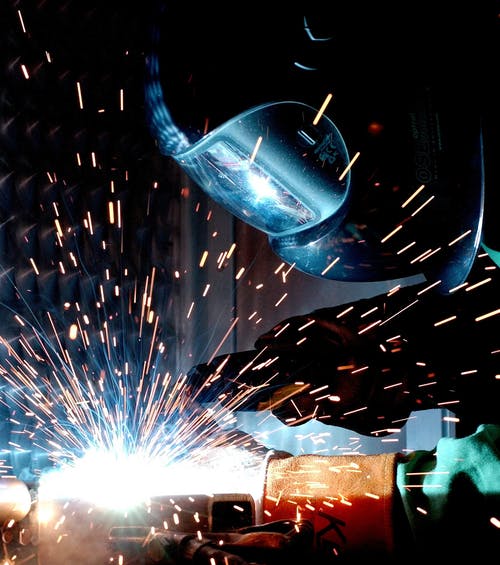Angle grinders are versatile tools, able to grind metal and cut tile, stucco and pavers, rout out mortar and are able to sand, polish and sharpen. It is essential when using this tool that the right process and technique is used when handling it, not only for a successful finish but also for safety. Read on to find out how to successfully use an angle grinder.
Angle grinders use a wide variety of cutting and grinding wheels – these tools are found in any store where power tools are sold. Large hand grinders are available, but for most tasks you can use 4-in ad 4 1/2-in grinders. What makes this power tool so versatile is its ability to handle different wheels and accessories.
Metal cleaning
For metal cleaning, wire wheels remove rust and flaking paint quickly and easily. Wire wheel and brush angle grinder attachments are designed for different types of stripping, cleaning and deburring tasks. The best solution for stripping paint or rust from broad and/or flat areas are wire cup brushes. Wire wheels give you more versatility in the fact that they fit into crevices and corners more easily.
Cut bars, rods and bolts
If you are after quick, rough cuts in metal the best tool to use is a grinder. It is possible to cut rebar, angle iron, rusted bolts and welded wire fencing with this by using an inexpensive cut-off wheel for these and other metal-cutting tasks.
The process is done by mounting a metal cutoff wheel in the angle grinder, and propping up the long side of the rebar and holding it securely. Then, drop the cut-off wheel through the metal, allowing the weight of the tool to do most of the work. Finally, allow the short end to drop freely to avoid binding the blade.
Cut tile, stone and concrete
It is almost impossible to notch and cut ceramic or stone tile to fit around outlets and other obstructions. However, an angle grinder fitted with a dry-cut diamond wheel makes short work of these types of jobs. You can do this by simply outlining the cut accurately on both the front and back of the tile, clamp the tile to the workbench and score the outline about 1/8-in deep on the front with the diamond blade. Then, flip over the tile and cut through the tile from the back. Extend the cuts slightly past the lines at the corners to make crisp, square corners.
Restore cutting edges
When outfitted with a grinding wheel, the angle grinder is a great tool for restoring the edges on rough tools like hoes, shovels and ice scrapers. It is also ideal for the initial grinding of axes, hatches and lawn mower blades. If you require sharper edges than the grinder finishes with, you can follow up with a mill bastard file.
The best technique for all of these tools is to clamp the blade in a vise or workbench with hand clamps, orient the grinder and adjust the blade guard to deflect sparks from your face and body. Then, align the grinding wheel with the angle on the blade, start the grinder and move the grinding wheel steadily across the blade whilst applying light pressure.
With the grinder off you should rest the grinding wheel against the blade and adjust the angle of the grinder to match the blade’s bevel. This is the ideal position you will want to maintain as you grind the edge. Lift the grinder from the edge, turn it on and then allow it to speed up before moving it onto the blade. Stroke the grinder across the work in the direction of the handle rather than grinding back and forth for the optimum finish. After, lift it off and repeat and then concentrate on holding the grinder at a consistent angle throughout the stroke.
Cutting out old mortar
Grinding is the best solution for removing old mortar. Thicker diamond tuckpointing wheels are able to remove old mortar quickly and easily without disturbing or damaging the bricks.
Safety
It is good to note the best steps to take to ensure safety when using an angle grinder. Please note the following points to keep yourself safe when using this tool:
- Wear a face shield and gloves
- Always unplug the grinder when you’re changing wheels
- Attach the handle and maintain a firm grip with both hands
- If possible, always use the guard
- Run new wheels for one minute in a protected area before using them – this ensures the wheel isn’t defective
- Orient the work so debris is directed downwards and not towards you
- Keep bystanders and those not involved in grinding away
- Always wear safety glasses, no matter if you are the handler of the grinder or a bystander
- Orient the work so the wheel spins away from into sharp edges
- Keep sparks away from flammable materials
- Clamp or secure the workpiece in some fashion i.e. hand clamps, vice, etc.
- Store angle grinders out of children’s reach
At WIRS we have one of the most comprehensive ranges of welding supplies and associated welding machinery in the industry. Widely known throughout the UK as a leading stockist and distributor of welding equipment and consumables, WIRS are also specialists in welding machine repair, servicing, calibration / validation and hire. As a quality approved company (BSEN IS0 9001:2000) our customers know they can rely on us as their preferred supplier for all welding equipment, consumables and associated products.
For more information on our welding products and services, you can visit our website at www.wirs.co.uk, or you can call us on 01902 712525.

